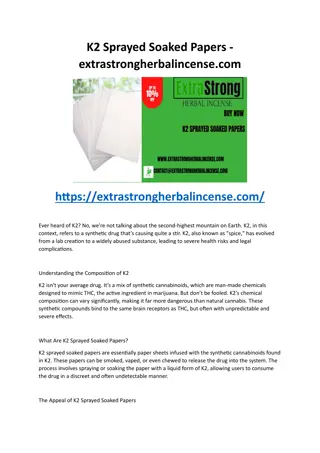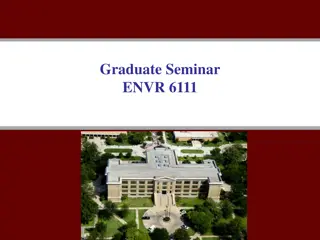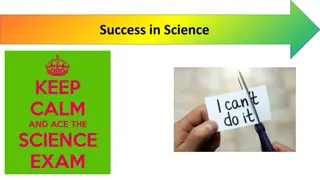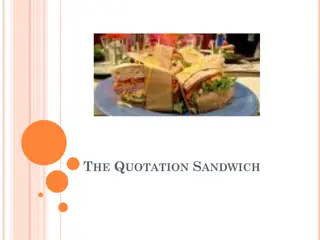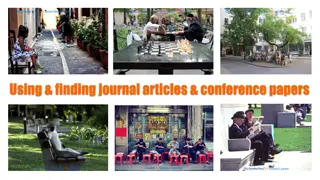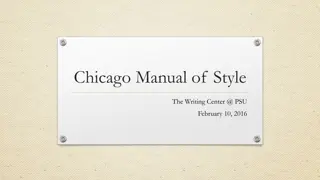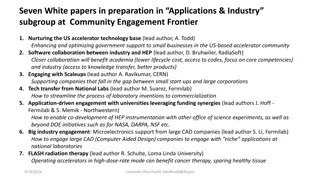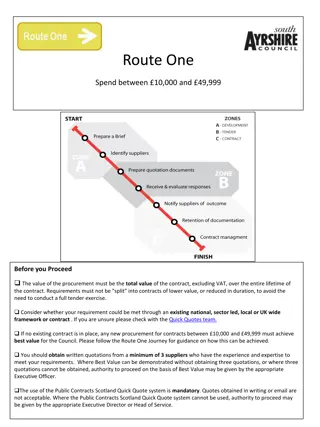Mastering Quote Integration in Research Papers
Master the art of integrating sources effectively in research papers by choosing relevant quotations, utilizing the quote sandwich method, and giving credit to sources. Understand the importance of making clear connections between your ideas and those of your sources to enhance the credibility of your arguments.
Download Presentation

Please find below an Image/Link to download the presentation.
The content on the website is provided AS IS for your information and personal use only. It may not be sold, licensed, or shared on other websites without obtaining consent from the author.If you encounter any issues during the download, it is possible that the publisher has removed the file from their server.
You are allowed to download the files provided on this website for personal or commercial use, subject to the condition that they are used lawfully. All files are the property of their respective owners.
The content on the website is provided AS IS for your information and personal use only. It may not be sold, licensed, or shared on other websites without obtaining consent from the author.
E N D
Presentation Transcript
Integrating Sources Choosing Quotations and Quote Sandwiches
Responding to Your Critical Sources As you write your research paper, you should ask yourself what each of your sources is going to add to your argument. As you read critical sources about your chosen work of literature and interact with the ideas of others (the critics) in your papers, there are two things you need to do: Make the relationship between your own ideas and your source s ideas CLEAR. Are you using the quote because it makes a point you agree with? Are you using the quote because it makes a point you disagree with? Are you using it because it you are about to show a connection between one source s ideas and another source s ideas? Are you using it because you want to explore it further with your own evidence from the work of literature? It is not enough just to say that you agree/disagree. What else do you need to do? The answer is to explain why and make your agreement or disagreement unique to you.
Using Sources and Giving Credit You ve found your sources, read them, annotated them, and you re ready to use your sources in your essay. So which quotes should you use? Quotes that contain ideas you want to respond to. Quotes where the original source s wording is especially good or important to your response. Quotes where the original source explains a complex idea clearly and succinctly. Quotes that contain ideas that would make most people want proof (which the quote you use should provide). Any quote you use should have an explanation/response that is TWICE AS LONG as the original quote. If a quote takes up two full lines of your paper, the explanation/response to that quote should take up FOUR. (This is true for quotes from critical sources AND quotes from the literature.)
The Quote Sandwich This is a way to integrate quotes into your paper smoothly and avoid drop-in quotes. The first piece of bread Introduce quote, possibly mention author, connect quote to what you were saying before. The Meat Your quote, correctly cited with in-text citation. The second piece of bread Interpretation/explanation of quote (NOT simply rewording the quote), connect quote to what you will say next. This is where you RESPOND to the quote.
Online Examples of Quote Sandwiches http://www.csun.edu/~hflrc006/quote.html https://sites.google.com/site/sasamtani/quot e_sandwich003.jpg Notice that both of these examples make the quote a part of a sentence the essay author wrote, and notice that both examples give credit to the source s author.
Example of quote use from literature and a critical source: The chapters The Sea Still Rises, The Grindstone, and Calm in the Storm all contain vivid descriptions of revolutionary fervor that were clearly designed to strike fear into the hearts of Dickens Victorian audience. The same people who were downtrodden and pitiful in earlier chapters take on a more sinister, active character: Every lean bare arm, that had been without work before, had this work always ready for it now, that it could strike (275). In this sentence, Dickens reminds his readers of the condition of the people, using the words lean and bare. All throughout the chapters that describe the early days of the Revolution, there is a tone of warning in the narrator s voice. One commentator, being critical of Dickens for his violently negative portrayal of the Revolution, accuses him of thinking that the poor are best when they suffer or pass their days passively (Scheckner). However, a close reading of these chapters suggests that it is not so much that Dickens prefers the poor in their passive state, but rather that he is trying to give a warning; to show what happens in a society where the upper layer ignores the needs of the lower, as he felt was the case in England at the time. Introduce quote from literature Quote w/in-text citation Analysis of quote Introduction of critical source Quote w/in-text citation Analysis of quote
Practice Quote Sandwich: We are going to practice responding to a critic. Choose a quote from the article, read it carefully, and then ask yourself what your response to this quote from a critic is. Look back over the relevant sections of Death of a Salesman. What lines, word choices, and other literary elements support your response to the quote you chose? Write a paragraph where you use the quote from a one of these critics AND a quote from the play. Remember to introduce and explain your quotes sufficiently. Use the quote sandwich method.
Possible Quotes (Feel free to choose one you marked as intriguing.) Quote 1: The play constructs the American Dream as harmful as long as it is based on selfish greed with no consideration for the good of the larger community (Benziman 21). Quote 2: Side by side with his denunciation of the selfish ethics of individuals and society under capitalism, Miller does construct a model of material and professional success that manages to uphold ethical and social values. This positive potential of the American dream is embodied in the seemingly minor characters of charley and his son, who function as analogical contrasts for Willy and his sons (Benziman 24).


